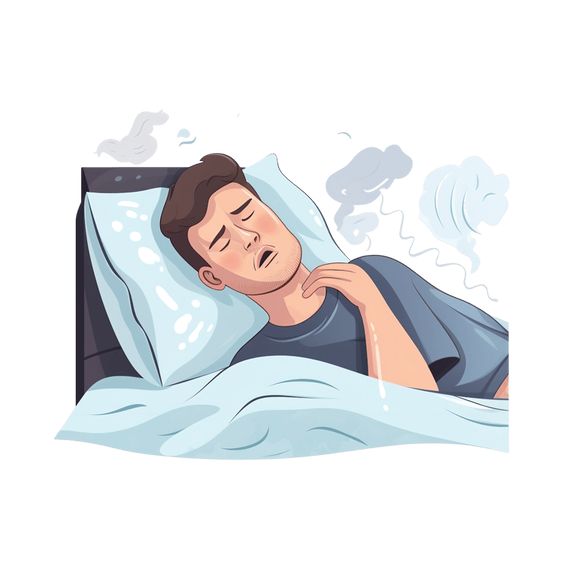
If you’ve ever had a sudden sharp pain in your lower back or hip that went down into your leg, you may have experienced sciatica nerve pain. Between 10% to 40% of the population experience sciatica during their lifetime. Sciatica before the age of 20 is rare unless an injury causes it.
What is Sciatica?
Sciatica starts in the sciatic nerve, which is the longest nerve in the body. It starts in the lower back, behind the pelvis, and branches off to run down the hips, buttocks, legs, feet, and toes. Sciatica occurs when the sciatic nerve becomes pinched from too much pressure.
Sciatica is usually caused by a herniated disc in the spine that presses on the sciatic nerve. Other possible causes of sciatica include:
- Injuries
- Pregnancy
- Spinal stenosis
- Obesity
- Poor posture
- Osteoarthritis
- Degenerative disk disease
- Nerve disorders
What Are the Symptoms of Sciatica?
The most common sciatica symptom is pain, usually described as sharp or electrical. The pain may radiate down the buttock and leg of the affected side.
Other symptoms of sciatica include:
- Tingling or a “pins and needles” feeling
- Numbness
- Weakness
Sciatica pain often starts slowly and then worsens when performing certain actions, such as sitting or standing, sneezing, or coughing. It may also be worse during certain times of the day, typically at night. Sciatica may also worsen if you bend backward or strain during a bowel movement.
How Is Sciatica Treated?
Sciatica is a broad term for nerve pain, not necessarily a medical diagnosis. Whatever may be causing the nerve pain—such as spinal stenosis—would be the actual diagnosis. Sciatica usually goes away by itself, but there are treatment options available for the pain.
Eight treatment options for sciatica include:
1) Non-steroidal Anti-inflammatory Drugs (NSAIDs)
These include ibuprofen, aspirin, and naproxen. Muscle relaxers can also help. However, it’s important to remember that non-aspirin NSAIDs can increase the risk of heart attack and stroke, as well as stomach bleeding. Usually, the side effects occur if you take large doses or use NSAIDs for a long period of time.
2) Ice
Ice or cold compresses can reduce pain and swelling after sciatica pain starts. Remember to wrap ice packs in a towel to stop them from touching your skin directly. Only apply ice for 20 minutes at a time. Putting ice directly on your skin or keeping it on for too long can cause frostbite. It can also cause irritation or blisters.
3) Heat
Heat can also help reduce pain. Similar to using ice, make sure to wrap any heating pads in a towel to avoid direct contact with your skin, as adding heat directly to your skin can cause a contact burn.
4) Stretching
It might seem counterintuitive, but stretching can actually help relieve sciatica nerve pain. Stretching and other physical activity can reduce pressure on the sciatic nerve. You might want to work with a physical therapist or other healthcare provider to learn how to stretch properly and avoid further injury.
5) Lifestyle Modifications
Medication isn’t always needed to treat sciatica. Sometimes making minor changes to your lifestyle can help. For example, if you sit for long periods of time, it can be helpful to get up every once in a while to stretch your back. You should also avoid hunching over when you sit. You want to try to relieve any pressure on the sciatic nerve.
6) Spinal Injections
Your doctor might recommend a spinal injection for your sciatica. Corticosteroid injections can provide relief for up to three months. Although injections are considered safe and effective, they’re usually a last resort and are used if more conservative treatments don’t work.
7) Alternative Therapies
There are several alternative therapies that may help relieve sciatica pain, including yoga and acupuncture. If you choose an alternative method of pain relief, just be aware that they might not be covered by your insurance.
8) Surgery
If your sciatica nerve pain is more severe, surgery may be the best option for relief. Typically, doctors won’t recommend surgery unless nonsurgical options have been exhausted or the pain is persistent and progressive. Surgery does come with risks, however, so it’s important to have a discussion with your doctor if you're considering surgery.
Tips for Coping with Sciatica
Although it might be tempting to get a lot of rest, your pain might actually increase if you stay in bed or avoid moving for too long. Try to stay as active as possible, within reason. If at any point you start to feel worse, stop what you’re doing so you don’t cause further injury.
Sciatica doesn’t usually last for more than a couple of weeks, but if it does, be sure to talk to your doctor to discuss further treatment options. As soon as you feel able to, try to resume your normal activities.
Resource Links
- "Sciatica" via National Library of Medicine
- "Sciatica" via Mount Sinai
- "Sciatica" via Cleveland Clinic
- "Disease & Conditions: Sciatica" via American Academy of Orthopedic Surgeons






